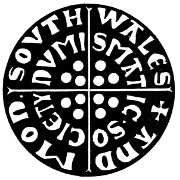TWO WELSH COMMUNION TOKENS
Noel Cox
There are 5000 Scottish Communion tokens and 3000 worldwide as the Scots emigrated and took the concept with them and of this number there are just two for Wales – one for Cardiff and one for Swansea, The Cardiff token is scarce and the Swansea token rare and neither token was included in the Noble Sale of Communion Tokens, July, 2000 which listed over 7000 tokens. Having collected Welsh tokens for 50 years my initial thoughts were that given the late founding of the two Presbyterian churches they had simply been used as commemorative pieces, but a recent study of the minutes of the Cardiff church show that they were used for their original purpose albeit for short period.
The two tokens are similar in style and show the ‘burning bush’ on the obverse, a favourite emblem of the Scottish Presbyterian Church, and on the reverse the biblical text ‘This Do in Remembrance of Me’ taken from I Corinthians II.24. The tokens are in White Metal and measure 27x22mm oblong.
CARDIFF PRESBYTERIAN CHURCH, Windsor Place
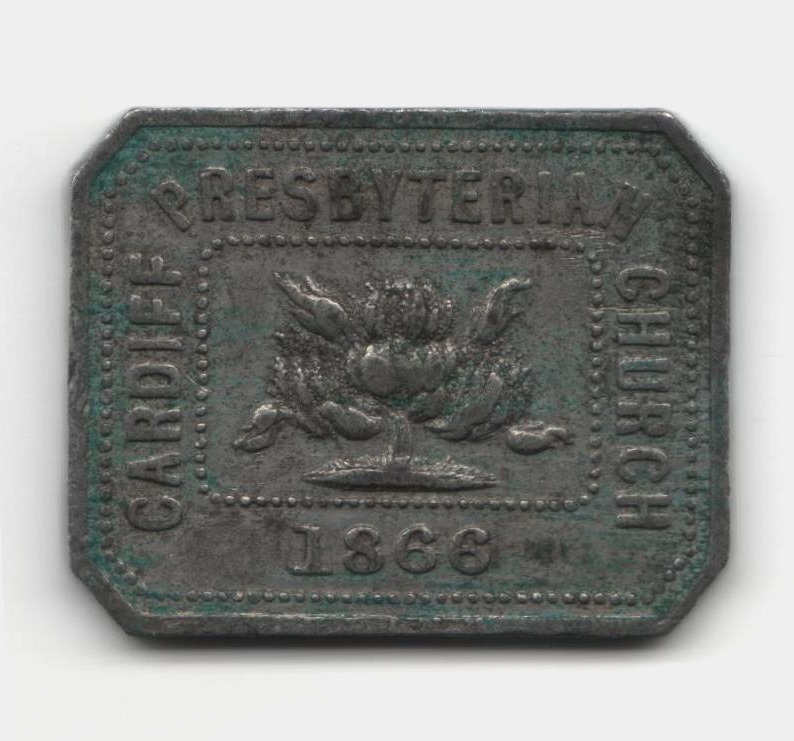
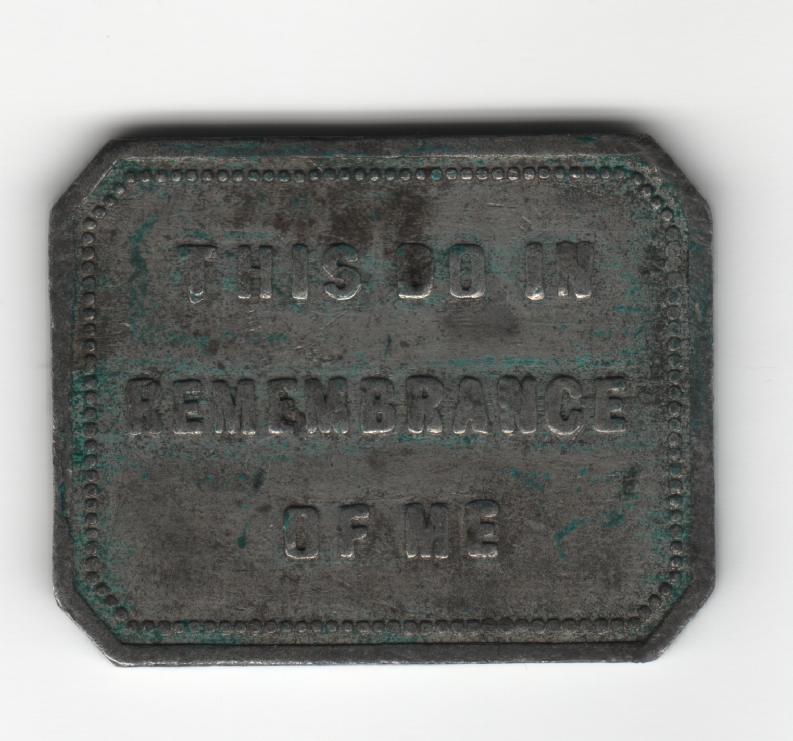
The church was established as a result of a visit to Cardiff in June 1864 by the Revd. George Johnston of Liverpool and the Revd. Peter Hope of Wamphray, Co. Dumfries, as deputies of the Home Mission Committee of the Presbyterian Church in England. The Revd. James Paterson, of Liverpool was appointed to serve local, mainly Scottish, Presbyterians and services began in the Cardiff Arms Hotel in August,1864. In October, 1866 (the date shown on the token) a prominent church building was opened in Windsor Place, and was designed by F.T. Pilkington based on his model of his chapel constructed in Barclay Place, Edinburgh in 1862. The west front was rebuilt in 1893 by E.M. Vaughan, Cardiff and the interior in 1910 after a fire. The church retained strong Scottish connections and most of its earlier ministers were Scottish.
The church mimages/minutes (held in the Glamorgan Archives, Cardiff) show that communion tokens were introduced in October, 1869 and it was proposed that these be distributed in the week before the service of the sacrament of the Lord’s Supper and used as Admission Tickets. The number of communicants had grown steadily and the use of the tokens obviously provided a form of control over the numbers attending the service. In June 1876 65 tokens were issued and 93 in June 1879. The number of members grew steadily, there were 450 members in 1892 and 259 members attended communion in July, 1894. At this time the use of the tokens stopped and Attendance Cards were introduced.
Apart from my own specimen, examples of the token are held by the British Museum, National Museum of Scotland, Edinburgh, St. Andrew’s University, United Reformed Church Archives, and four, to my knowledge, in private collections.
The church, now known as the City United Reformed Church, became part of the United Reformed Church in 1972 and is still open.
SWANSEA PRESBYTERIAN CHURCH (St. Andrew’s) St. Helen’s Road.
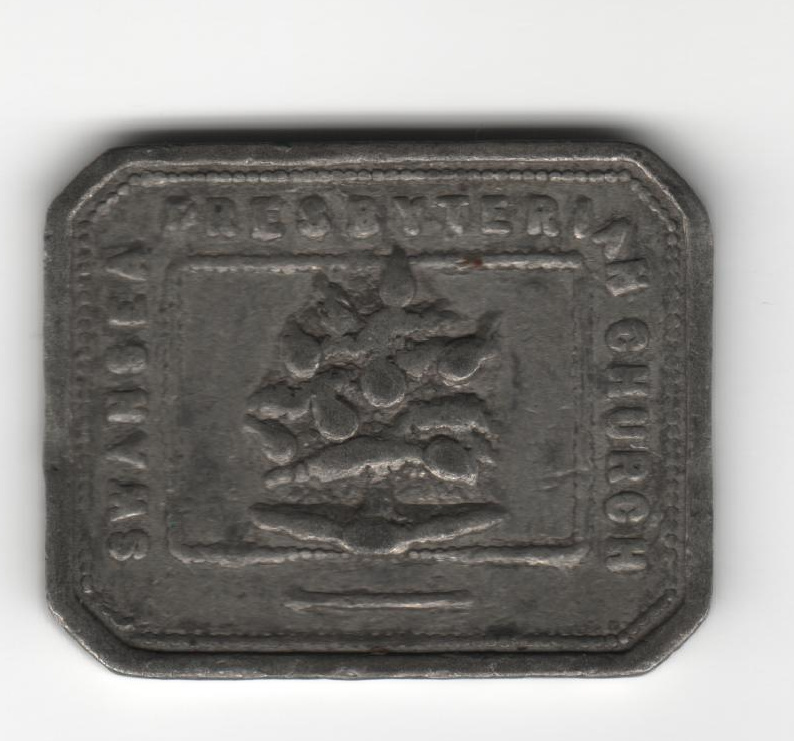
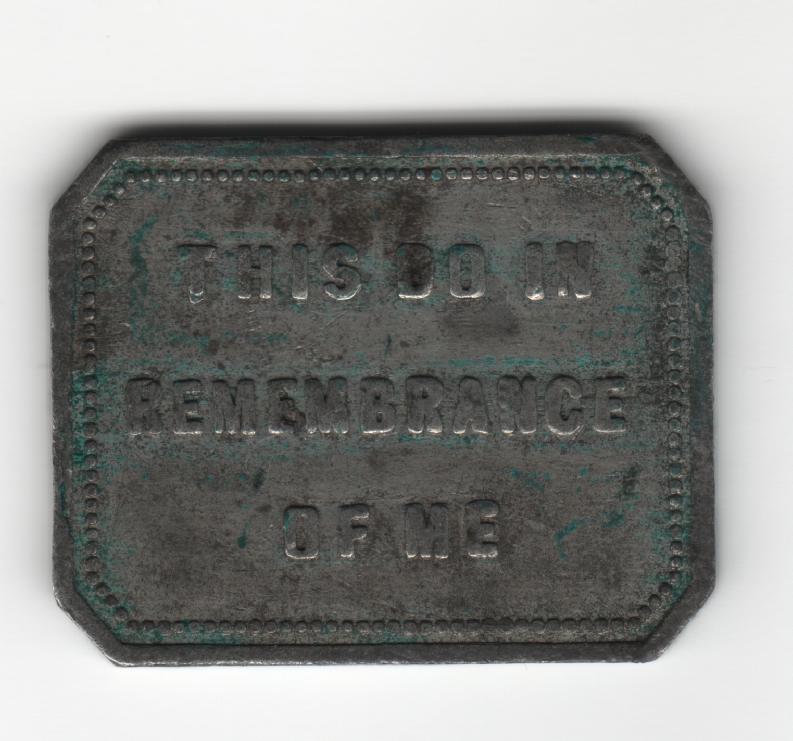
Correspondence with the Home Mission Committee of the Presbyterian Church of England led to a meeting on 5th August, 1862 when Rev. James Paterson of St. Peter’s Church Liverpool was appointed to visit Swansea and to ascertain what were the prospects of success in forming a church in Swansea. The first service was held in the Town Hall on 12th March, 1863 and a church in St. Helen’s Road, known as the Scotch Church, was opened in 1864. The number of communicants rose from an initial 79 to 273 in 1871, and many of these were Scottish drapers who moved to Swansea to take advantage of trade in a growing and prosperous town. Thereafter membership by 1877 had declined to 137 as some members left the town or transferred to other churches.
The church minutes (held in West Glamorgan Archives, Swansea ) make no mention of the use of tokens, but they must have been used by 1877 as one is listed by Batty (no. 3168) Catalogue of the Copper Coinage of Great Britain. Batty did, however, get it wrong and described the ‘burning bush’ as a ‘burning tree’.
Apart from my own specimen I am only aware of two others, both in private collections.
The church became part of the United Reformed Church in 1972 and closed in 1992. The church building in St. Helen’s Road is now a mosque and cultural centre.
Only two in number the tokens are an important part of the overall token coinage for Wales.
